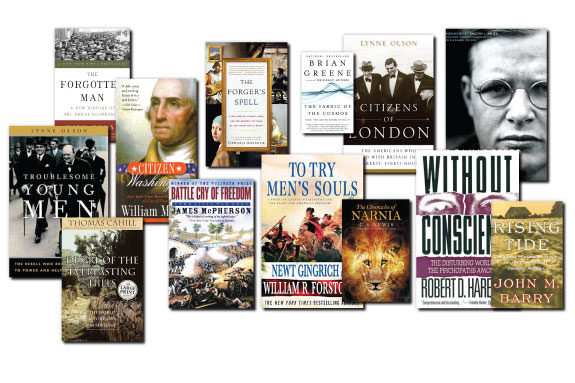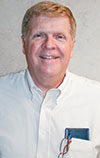The American dairy farm is the result of events much larger than milking or feeding cows. Ask for the family history of any dairy farmer and it will begin with a people in another country across an ocean. Larger world events drove them or their parents or grandparents to America, where they started and grew the farm enterprise of today. Examples abound among the Dutch and Portuguese ancestries of many Western dairymen or the Scandinavians now dairying in the Upper Midwest.
In addition to those, over the years I have worked with dairy farmers with Polish, Swiss, Italian, German, Irish, French and Ukrainian ancestries.
All of which bring a richness to the industry, and all of them here because of events larger than themselves. Even those residing on farms held by their family for centuries have the same story. All have come here to avoid the effects of wars, famine, depression, intolerance or poverty.
Those turbulences have not disappeared. Today we witness a worldwide economic upheaval unseen since the 1930s. The economic malaise, not just in dairy, pressures every government, even our own. Some of those will be able to withstand it; some will not.
The European Union is at risk, and the collapse of its member countries’ economies may spread to others, even to the U.S. Country after country is going through regime change.
Some have been violent (Libya or Egypt), others by the ballot (Turkey) and still others by parliament (Italy). Some will soon face it by death of leaders (Cuba and Venezuela).
All of these will impact dairy farming in America. This time the long-term effect on the industry may not come from the relocation of dairy-farming immigrants but, at a minimum, it will change consumer markets and the values of goods dairy farmers produce.
We need to appreciate that dairy farming is a small part of a larger process and dairy farmers do not shape that process; they are shaped by it. I do not truly accept the idea that history repeats itself – rather by understanding history we can better understand the present and where it will take us in the future.
Because of the seeming similarities between today and the 1920s and 1930s, much of the focus of my recent reading has been on that era. As a consequence, my recommended reading tilts that same way.
It is often said that America prior to World War II was different from the post-war America. While true, the real dividing line was 1927-1928 and the event was not a war but one of America’s greatest natural disasters.
In Rising Tide: The Great Mississippi Flood of 1927 and How it Changed America , John M. Barry, in easy-to-read and easy-to-understand stories, explains how the geology and hydrology of one of the world’s unique river systems, the social and economic changes in the Reconstruction South, national politics, the advent of radio and an extraordinary period of rain caused a giant upheaval in politics from New Orleans to Washington.
Among other things, the story of the 1927 flood is the story of Herbert Hoover, who never held an elected office, and his rise to the Presidency. It is also a story of how the party of African-Americans, the Republican party (think Abraham Lincoln), became the party of no blacks due to Hoover’s Southern Strategy.
The next book details the economic conditions created by the Crash of ’29 in Hoover’s administration, Roosevelt’s programs to change American society and their impact on the average man.
In The Forgotten Man , Amity Shaels details the progressive and collectivist policies of Roosevelt, their source, how they were successful in part and stymied in part and the fight which continues to this day.
In this era another Republican came from nowhere to be the Republican candidate to run against Roosevelt – Wendell Willkie. An electric utility owner and executive, he wrote a letter to the editor challenging Roosevelt.
The letter became a hit and resulted in a “draft Willkie” movement, leading to his ultimate nomination to challenge Roosevelt in his run for a third term. He lost the presidency but saved another country and our own.
That is the story of Citizens of London . Lynne Olsen details how Roosevelt sent Willkie to replace Joseph Kennedy as the U.S. ambassador to Great Britain. Disregarding protocol, in which the ambassador comes to the king, King George of England underscored the importance of Britain’s ties with the U.S. and waited for Willkie’s train to arrive.
It was through Willkie’s efforts that American aid (technically neutral in the war at that time) went to Great Britain. Americans such as Willkie, Averill Harriman, Edward Murrow and others in London helped Great Britain during the dark days of World War II.
Another great book by Olsen that predates this book is Troublesome Young Men , the story of how back-bencher and even forgotten Winston Churchill took down the extremely popular, but antiwar, prime minister Neville Chamberlain (who said that he had negotiated “peace for our time” when, through the Munich Agreement, Hitler gained Czechoslovakia).
Eric Metaxas’ Bonhoeffer: Pastor, Martyr, Prophet, Spy: A Righteous Gentile vs . The Third Reich takes the reader inside the Third Reich in his biography of Dietrich Bonhoeffer.
With incredible moral courage derived from his deep orthodox Christian faith, this Lutheran pastor was among the first Germans to publicly challenge Hitler. Dietrich was one of the plotters of the famous and failed Rastenburg assassination attempt of Hitler. He was arrested and executed literally within hours of the end of the war.
Another book about events during World War II – one that will speak to the Dutch who endured its hell – is The Forger’s Spell: A True Story of Vermeer, Nazis, and the Greatest Art Hoax of the Twentieth Century by Edward Dolnick.
Han van Meegeren painted “Christ and the Disciples at Emmaus.” At his urging, art critics and experts throughout the world thought it the greatest Vermeer ever painted. Johannes Vermeer was one of the great Dutch painters, with exquisite details that are almost photographic in their presentation.
“The Milkmaid” is a great example. His religious paintings, too, were lifelike. Van Meegeren was tried after the war for collaborating with the enemy because he traded “Christ and the Disciples at Emmaus” and other painting treasurers to Goering and the Nazis.
Van Meegeren’s defense was that there was no collaboration because he painted it and effectively defrauded the enemy. The collaboration charge was changed to forgery. This story, based on fact, gives insight into wartime Holland and art forgery. The biggest lesson is that forgers succeed because they give people what they want.
This is the topic of a different kind of book – a book about psychopaths. How often have you heard someone say, or even said yourself, “How did I fall for that person?” The question is asked by the most sophisticated and smart as well as the foolish.
In Without Conscience: The Disturbing World of the Psychopaths Among Us , Robert D. Hare explains the way psychopaths (not all of which are violent) do so well what they do – deceive people. When you read this you will, like me, see a number of people you know and will know them better.
The 150th anniversary of the American Civil War begins this year. Such anniversaries result in a surge of titles on the subject. I have read some of them and will read more, but for me, the best book on that American period remains James M. McPherson’s Battle Cry Of Freedom: The Civil War Era .
He spends important pages on how the country got to the battle. The guns of Fort Sumter do not fire until page 234, but by then the reader no longer asks how such a war could happen, but why did it take so long for it to happen. No other single book explains the why, how and result of that terrible conflict.
Historical fiction uses real facts of history with real historical figures with fictional persons, often to be the voice and storyteller of the facts. An example of this is William Martin’s Citizen Washington .
Martin uses a fictional reporter who, after the death of George Washington, obtains interviews from those who knew Washington. These include family, slaves, Indians, soldiers, politicians, merchants and others from childhood until his death.
Prepare to find a much deeper and wider understanding of who George Washington was and why he truly was, and remains, the Father of the Country.
Another fictional history used to tell a true story is Newt Gingrich’s To Try Men’s Souls . This book details the heroic battle of Trenton at a time when the American Revolution was at its lowest level.
Using the opening phrase in Paine’s pamphlet “The Crisis” as a launching point, the book leads the reader through the pain and victory of Washington on Christmas 1776. (The first paragraph of “The Crisis” is still worth reading. http://www.ushistory.org/paine/crisis/c-01.htm ).
To challenge the mind, Brian Greene’s The Fabric of the Cosmos: Space, Time and the Texture of Reality makes understandable complex, non-intuitive mathematical concepts, like the 11 space (not three space) world of subatomic strings, to those untrained physicists or mathematicians.
Through analogies, the book brings an understanding of the development of thought as to what the universe is.
At a deeper level, Thomas Cahill’s Desire of the Everlasting Hills: The World before and After Jesus (Hinges of History ) combines the eyewitnesses to Jesus’ life with the historic, social and cultural background of his time.
In doing so he brings to life the love, ministry, teaching and revolutionary views that inspired followers to turn the death of a man, who was judged a common criminal, and His resurrection into missionaries throughout the Roman Empire.
C.S. Lewis’ Tales of Narnia , provides escape in a wonderful allegorical tale of the Christian faith. Lewis, truly one of the most accomplished English writers, produced a range of books on philosophy and religion still worth reading today.
But his fictional series, Tales of Narnia , narrate fictional events in a world beyond the wardrobe to tell a truth. While appealing to children, these tales are sophisticated and rich enough for even the discriminating adult reader of any age.
By reading, we are able to experience people, places and events that we cannot physically see. In doing so, we gain a greater understanding of our place in this complex world, even the universe. PD
PHOTO:
TOP RIGHT: Ben Yale suggests that dairy farming is a small part of a larger process and that dairy farmers do not shape that process; rather, they are shaped by it. He recommends the books above to help dairy producers find their place in today’s world.

Ben Yale
Yale Law Office
ben@yalelawoffice.com







